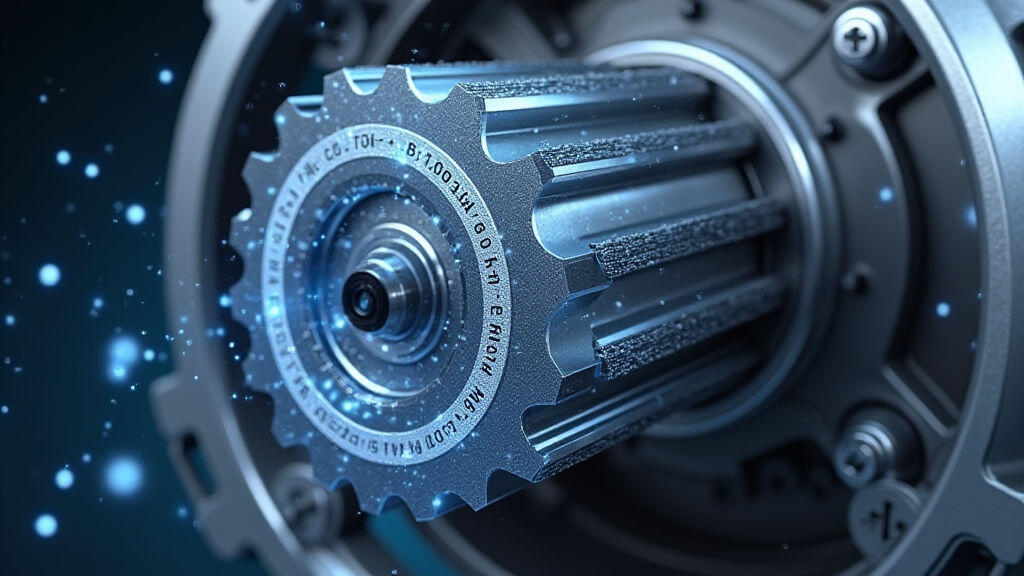
In the fast-paced world of packaging, efficiency and reliability are paramount. The heart of many packaging machines lies in the gear motors – the components responsible for providing precise and powerful motion. Choosing the right gear motor brand is a critical decision that directly impacts production uptime, product quality, and ultimately, profitability. However, many packaging equipment enterprises fall prey to common pitfalls during the purchase process. This article outlines these mistakes and provides actionable solutions, with a specific focus on leveraging high-quality gear motors from brands like MES-Drive to achieve optimal performance and long-term value. As we navigate the current landscape of increased automation and the relentless pursuit of sustainable packaging solutions, selecting the right motor partner is more vital than ever.
Before delving into the mistakes, it's crucial to understand the pivotal role gear motors play. In packaging machinery, these motors are responsible for a wide range of tasks, including:
The reliability and performance of the gear motor directly influence the speed, accuracy, and consistency of these processes. Poor motor performance can lead to production bottlenecks, increased downtime, and compromised product quality – all translating into significant financial losses. The increasing demand for flexible packaging solutions, driven by e-commerce and personalized product offerings, further amplifies the need for robust and adaptable gear motor technology. 
Here are some of the most prevalent mistakes packaging equipment enterprises make when selecting gear motor brands:
1. Focusing Solely on Initial Cost: The temptation to opt for the cheapest gear motors can be alluring, especially during budget constraints. However, this short-sighted approach often leads to higher long-term costs. Inferior materials, inadequate design, and poor manufacturing processes can result in premature wear and tear, frequent repairs, and extended downtime. The Total Cost of Ownership (TCO), encompassing purchase price, maintenance, energy consumption, and lifespan, should be the primary consideration.
2. Neglecting Technical Specifications: Simply selecting a motor based on apparent size or horsepower is insufficient. Key technical specifications such as torque, speed, efficiency, gear ratio, and overload capacity must be carefully evaluated and matched to the specific requirements of the application. Failing to do so can result in inadequate performance, overheating, and motor failure. Consulting with qualified engineers and analyzing application-specific load charts is crucial.
3. Ignoring Brand Reputation and Reliability: Not all gear motor brands are created equal. Some brands have established reputations for quality, reliability, and excellent customer support. Choosing an unknown or unproven brand can be a risky proposition. Thorough research, including checking online reviews, industry recommendations, and manufacturer certifications (like ISO 9001), is essential.
4. Overlooking Power Factor and Energy Efficiency: Energy costs are a significant operational expense for packaging companies. Gear motors with low power factors and poor energy efficiency contribute to higher electricity bills. Selecting motors with high power factors and energy-saving features (such as IE3 or IE4 ratings) can yield substantial cost savings over the motor’s lifespan. Especially in light of the ongoing focus on corporate social responsibility and environmental sustainability, energy efficiency is no longer a "nice-to-have" but a business imperative.
5. Insufficient After-Sales Support: Beyond the initial purchase, adequate after-sales support is vital. This includes readily available spare parts, prompt technical assistance, and comprehensive warranty coverage. A brand with a strong service network is better equipped to minimize downtime and ensure the long-term performance of the gear motors.
To avoid these costly mistakes, packaging equipment enterprises should adopt the following best practices:

The future of gear motors in the packaging industry is inextricably linked to the trends of automation and sustainability. As packaging lines become increasingly automated, the demand for precise, reliable, and energy-efficient motors will continue to grow. Furthermore, the rising focus on sustainable packaging materials is driving demand for motors that can handle a wider range of materials and processes. Motors incorporating energy-saving technologies, such as regenerative braking and variable frequency drives (VFDs), will become increasingly prevalent. Moreover, the integration of IoT (Internet of Things) technologies will enable predictive maintenance and remote monitoring, optimizing motor performance and minimizing downtime. 
Conclusion
Selecting the right gear motor brand for packaging equipment is a multifaceted decision that requires careful planning and execution. By avoiding common mistakes such as focusing solely on initial cost, neglecting technical specifications, and ignoring brand reputation, packaging equipment enterprises can significantly improve production efficiency, reduce downtime, and enhance profitability. Brands like MES-Drive are committed to providing high-quality, reliable gear motor solutions that meet the evolving needs of the packaging industry. As the packaging industry embraces automation and sustainability, gear motors will play an even more critical role in delivering efficient, reliable, and environmentally responsible packaging solutions. Investing in the right gear motor technology today is not just a smart business decision; it is an investment in the future of packaging.
Leave A Reply
Your email address will not be published. Required fiels are marked